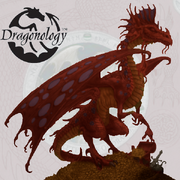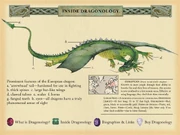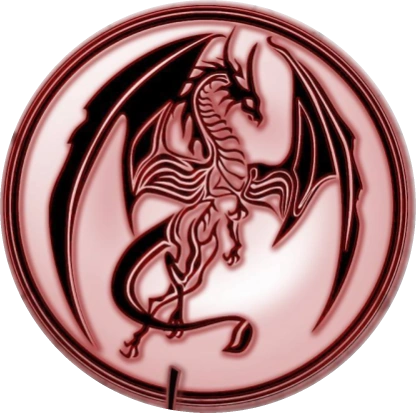
A European Dragon from the Dragonology books, as illustrated by Douglas Carrell
The European Dragon (Draco occidentalis magnus) from Dragonology
Known to most people through their ability to breath fire and their love of treasure, this species is now confined to a few remote areas. Effective at using language, they shed theis skins triannially. They can be found across the globe, although it is most common in the European mountains.
Description[]

A European Dragon from the Dragonology books, as illustrated by Helen Ward
They are 13 to 17 feet high at the shoulder and 45 feet long. Colouration is red, green, black, rarely gold with the most ancient turning almost white. European Dragons eat large herbivores and dislike human meat(Quite bitter, you see.). The egg is blue and purple, becoming darker towards hatching. They are highly intelligent, loving riddles and conversing in Dragonish, English or Latin. The European can often live for more than 400 years, with some examples long predating the S.A.S.D.. The different illustrators of the book series give the European dragon some differing features: Helen Ward and Wayne Anderson give them a quadrupedal stance (standing on all four legs) while Douglas Carrel gives them a bipedal stance (with the forelegs being short and acting like arms), which may invite readers to imagine these dragons as either bipedal or quadrupedal depending on the situation. Fine details such as wattles and horns vary a lot from illustration to illustration.
Trivia[]
- Dr. Ernest Drake was on first-name terms with many European Dragons, including Thorfax(Lived to 304.), Scorcher, Torcher, Idraigir, Guardian and Scramsax.
- They are the most selective hoarders, basing value on the hardness of the gem.
- They have a subspecies, the Tunguska.
